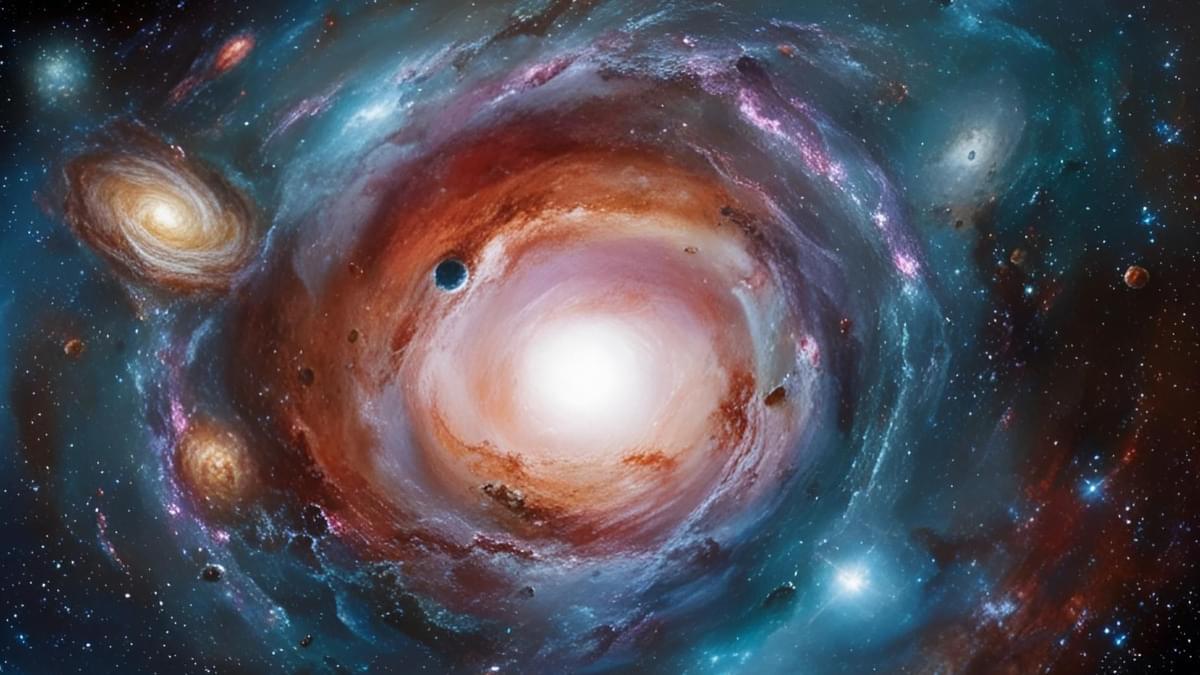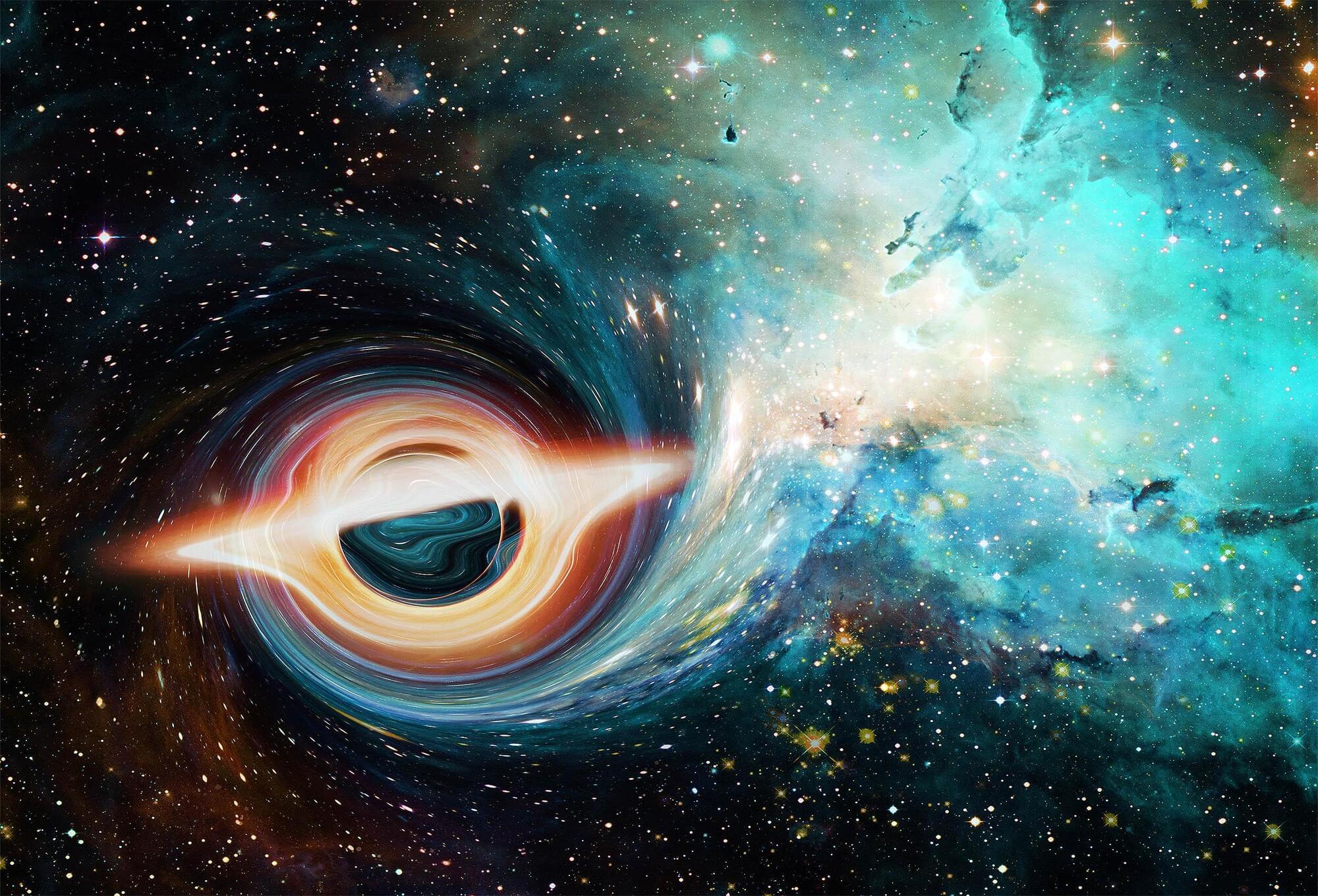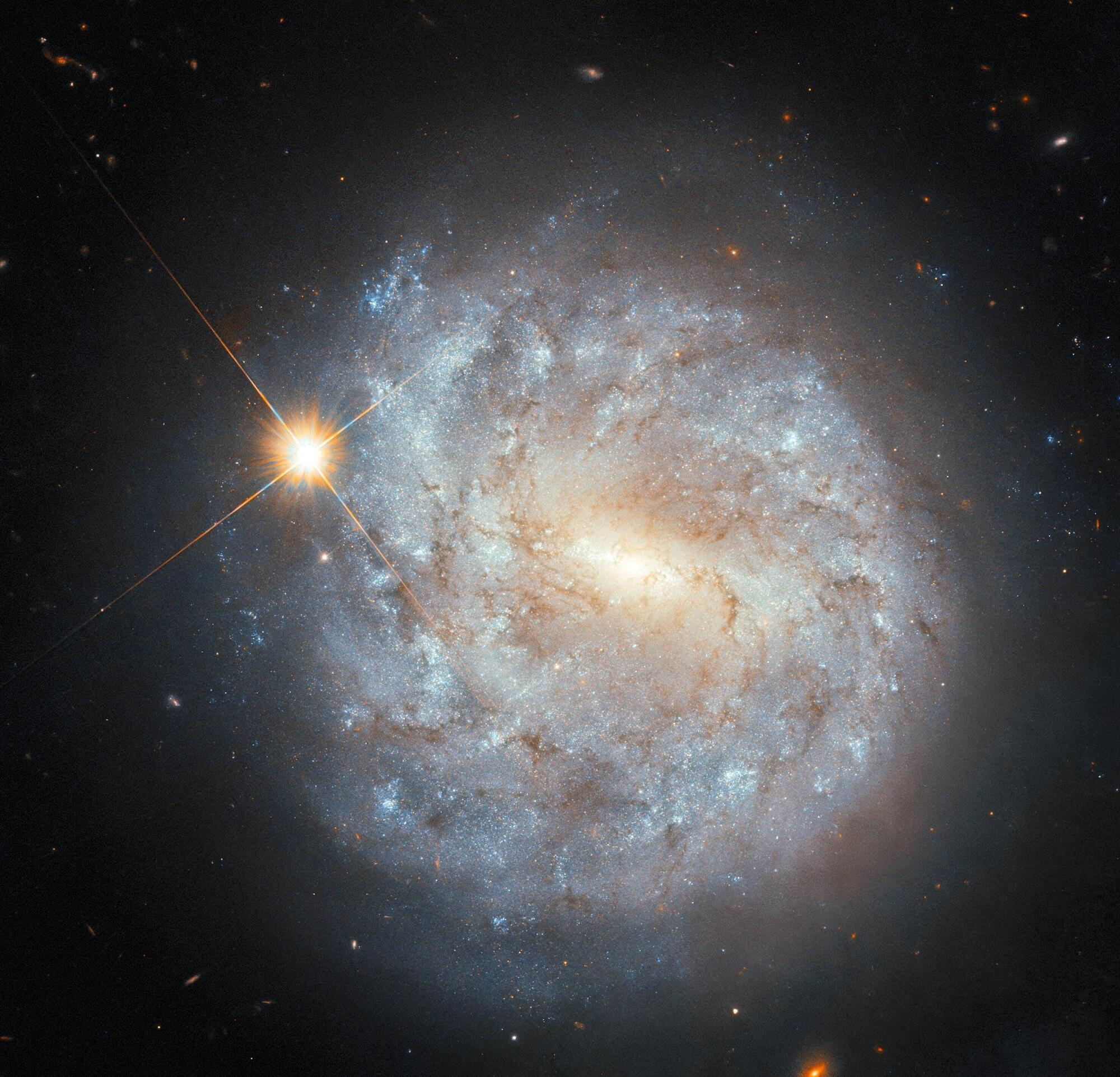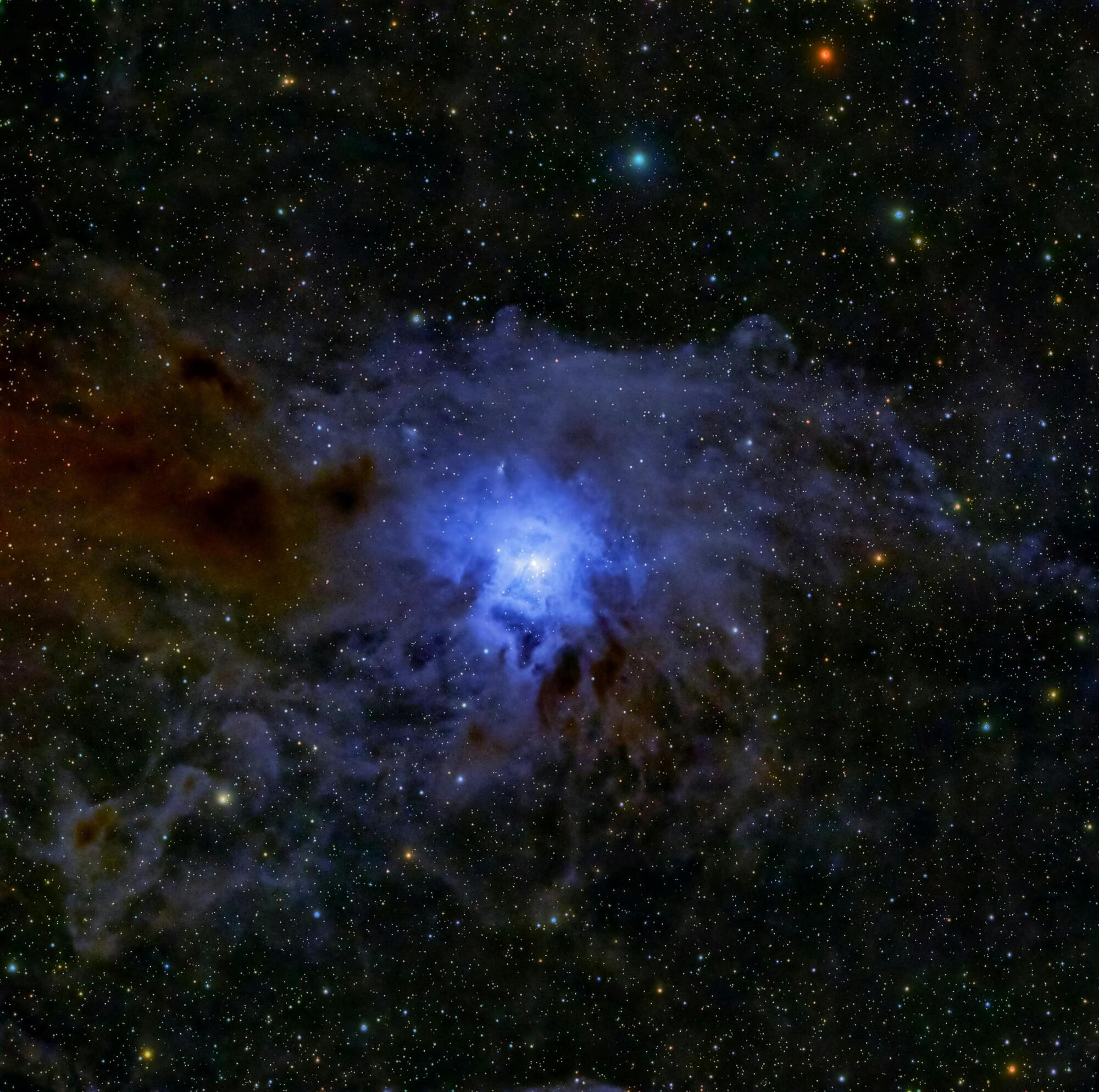If gravity arises from entropy, scientists could unite Einstein’s general relativity with the quantum realm while shedding light on dark matter and dark energy.


This Deep Dive AI podcast discusses The Origins of Us: Evolutionary Emergence and The Omega Point Cosmology by Alex M. Vikoulov, Book I of The Science and Philosophy of Information eBook/audiobook series. This book serves as both an accessible introduction and a standalone work, exploring some of the most profound questions in science and philosophy.
In this epic work, Vikoulov delves into the origins of life, consciousness, and intelligence, examining topics such as abiogenesis, noogenesis, and the rise of Homo sapiens. The book also presents The Omega Point Cosmology, which envisions a teleological progression of intelligence toward a cosmic destiny. It blends scientific exploration with digital physics, complexity theory, and transcendental metaphysics, offering a novel perspective on the interconnectedness of information, mind, and reality.
*The Origins of Us: Evolutionary Emergence and the Omega Point Cosmology by Alex M. Vikoulov is available as a Kindle eBook and Audible audiobook:
#OriginsOfUs #EvolutionaryEmergence #OmegaPointCosmology #SyntellectHypothesis #DigitalPhysics #HomoSapiens #ScienceOfInformation #PhilosophyOfInformation #AlphaPoint #OmegaPoint #abiogenesis #noogenesis #evolution #consciousness

Astronomers have identified a remarkable water reservoir hidden in a corner of the cosmos, circling a quasar more than 12 billion light-years away.
At that distance, the light we see today began its journey not too long after the universe itself formed.
The water supply in this distant place is huge, containing the equivalent of about 140 trillion times all the water in Earth’s oceans combined.

A stunning Hubble image showcases a spiral galaxy seemingly intertwined with a nearby star—but looks can be deceiving!
This new Hubble Space Telescope.
The Hubble Space Telescope (often referred to as Hubble or HST) is one of NASA’s Great Observatories and was launched into low Earth orbit in 1990. It is one of the largest and most versatile space telescopes in use and features a 2.4-meter mirror and four main instruments that observe in the ultraviolet, visible, and near-infrared regions of the electromagnetic spectrum. It was named after astronomer Edwin Hubble.

A mysterious phenomenon at the center of our galaxy could be the result of a different type of dark matter.
Dark matter, the mysterious form of unobserved matter which could make up 85% of the mass of the known universe, is one of science’s biggest manhunts.
In this first of its kind study, scientists have taken a step closer to understanding the elusive mystery matter. They believe a reimagined candidate for dark matter could be behind unexplained chemical reactions taking place in the Milky Way.
Renowned astrophysicist and educator Alex Filippenko joins Brian Greene to discuss an increasingly disturbing cosmological mismatch known as the Hubble Tension, a gap that may require a radical rewriting of the history of the universe.
This program is part of the Big Ideas series, supported by the John Templeton Foundation.
Participant: Alex Filippenko.
Moderator: Brian Greene.
0:00:00 — Introduction.
0:00:50 — Welcome to Alex Filippenko.
0:03:58 — The Most Important Lesson of Science.
0:06:47 — The Hubble Tension.
0:12:04 — Measuring the Expansion Rate of the Universe.
0:23:31 — How far out can we measure?
0:27:10 — Galaxies with Type 1A Supernovae and Cepheids.
0:32:57 — Cosmic Distance Ladder Summary.
0:37:30 — The Universe’s Expansion Rate Today.
0:47:20 — How can we be certain the measurements are correct?
0:51:00 — CMB and using Theoretical Models to Extrapolate the Expansion Rate.
1:00:57 — Positive outcomes to this tension.
1:02:14 — Filippenko’s thoughts on the position of Wendy Freedman’s recent paper.
1:14:09 — Will the Cepheid data set remain at 42?
1:16:55 — Filippenko’s thoughts on the Hubble tension.
1:22:40 — How Cosmology became a precision science.
1:25:11 — Is Inflation a Falsifiable Theory?
1:29:30 — Filippenko’s view of Inflation and the Multiverse.
1:31:08 — Filippenko’s view of Cyclic Inflation and Steinhardt and Penrose’s theories.
1:35:15 — Falsifiable Aspects of Inflation.
1:41:54 — Discovering the Accelerated Expansion of the Universe.
1:47:54 — Filippenko’s thoughts on Saul Perlmutter’s team’s analysis methods.
1:50:47 — Filippenko’s reaction to the initial discovery.
1:59:04 — Thoughts on Dark Energy and the Great Rip.
2:01:58 — Conclusion.
2:03:16 — Credits.
VISIT our Website: http://www.worldsciencefestival.com.
FOLLOW us on Social Media:
Facebook: / worldsciencefestival.
Twitter: / worldscifest.
Instagram: / worldscifest.
TikTok: / worldscifest.
LinkedIn: / world-science-festival.
#worldsciencefestival #briangreene #cosmology #astrophysics #alexfilippenko #bigbang #hubbletension #cosmicinflation #cosmicmicrowavebackground #multiverse #bigrip #darkenergy
Is our universe still evolving? Could it be a Baby Universe, part of an endless cycle of cosmic creation and destruction? In this episode, we explore the Hourglass Universe Theory, the possibility of an Anti-Universe, and whether cosmic balance was disrupted by a universal force.
📺 Watch the full video here: 👉 • From Creation to Duality: The Mystery… ](• From Creation to Duality: The Mystery…
Join us as we uncover the scientific mysteries of the cosmos, linking quantum physics, mythology, and cosmology to explore the hidden nature of reality. 🌠✨
🎧 Subscribe to Beyond Truth and journey beyond the limits of knowledge!
Please note: The information shared on this channel does not claim to be absolute truth or supported by scientific evidence. It represents the author’s vision and serves as one of many alternative theories. You are free to believe in it—or not—depending on how closely it resonates with you.
Our goal is to foster open-minded exploration while respecting all individuals. We aim to discuss topics freely, including religious, philosophical, and universal themes, without violating laws or causing offense to anyone’s emotions, religious beliefs, ethnic identity, or gender.
Seminar entitled “A minimal SM/LCDM cosmology”, given by Neil Turok (University of Edinburgh and Perimeter Institute for Theoretical Physics), November 21st, 2024, during the VI Amazonian Symposium on Physics (https://www.ppgf.eventos.ufpa.br/VIASP).
Get MagellanTV here: https://try.magellantv.com/arvinash and get an exclusive offer for our viewers: an extended, month-long trial, FREE. MagellanTV has the largest and best collection of Science content anywhere, including Space, Physics, Technology, Nature, Mind and Body, and a growing collection of 4K. This new streaming service has 3,000 great documentaries. Check out our personal recommendation and MagellanTV’s exclusive playlists: https://www.magellantv.com/genres/sci…
Link to book on Amazon: http://t.ly/sMJW
QHT Paper: https://arxiv.org/pdf/2008.09356.pdf.
Non-technical Explanation: https://jespergrimstrup.org/research/.… 0:00 — Does reductionism end? 2:24 — Why there probably is a final theory 7:00 — Quantum Holonomy theory 12:53 — Surprising implications of QHT Does a final theory exist that can end our reductionist probing into ever shorter distances? Or is there no end to reductionism? There should be an end point because as the object of our measurement gets small enough, the high energies needed to measure it will create a black hole. And no information can get out of a black hole. So there is a limit to measurable reality. We have united seemingly dissimilar forces in the past. For example, the unification of electricity and magnetism, and weak and electromagnetic forces. To continue this reductionism, we want a theory that unifies all known forces. Today we have two overarching theories for forces: Einstein’s Theory of General relativity for gravity, and The standard model for the electromagnetic, weak and strong force. The problem is that the standard model is a quantum field theory, but general relativity is a classical field theory. The two are not compatible. Past attempts for a theory of everything include string theory and loop quantum gravity. But string theory does not produce any falsifiable results. Its mathematics is too flexible. Loop quantum gravity only addresses gravity and not the other forces. Quantum Holonomy Theory or QHT was pioneered by two Danish scientists, physicist Jesper Grimstrup and mathematician Johannes Aastrup. It begins by asking question, how can a theory be immune to further scientific reductions, so that reductionism ends? The presumptive idea is that the simplest way to describe the universe is objects moving around in three dimensional space. The theory is based on the mathematics of empty 3-dimensional space, just space, not even time. So the starting point of QHT is the mathematics of moving stuff around. There are an infinite many ways you can move an arbitrary object between points in space. Any one of these combination of movements from point A to point B, is called a recipe. A recipe for a combination of movements in physics is called a gauge field. A gauge field is the recipe of how to move one particle from point A to point B. Gauge fields are what makes up the forces in the standard model. Since they are recipes of moving things around in space, they represent how things interact with each other, or how forces work. The sum of all mathematical recipes is called the “Configuration space” of these recipes. The key insight in QHT is that the this space has a geometry and stores a lot of information. Geometry means that two different recipes for moving stuff around can be said have a relationship between each other. This is complicated but can be proven mathematically. Grimstrup and Aastrup found is that this geometry results in mathematics that looks almost identical to the mathematics that we already know from quantum field theory – this includes the mathematics of the Standard model. From the geometry you can obtain a a Bott-Dirac operator. The square of this operator gives us the Hamiltonian for both matter particles and force carrying particles. The Hamiltonian represents the formula for all the energy in a system. #QHT #Theoryofeverything Once you have a description of the energies of all the matter and forces in the universe, that’s all you need to need to understand how matter interacts in the universe, and is essentially everything we would need to describe the universe, once all the math is worked out. By simply considering the movements of objects in empty space, all this rich mathematics that appears to resemble the known mathematics of the universe comes out. If QHT is correct, then here are the implications: 1) The universe is quantum because the only way you can describe things moving in empty space is via quantization. 2) Gravity is not quantized, so there is no theory of quantum gravity. 3) No singularities can exist 4) There is no infinite curvature of space-time inside black holes 5) The universe could not have come from nothing, but from a prior universe — a Big Bounce! Become a patron: https://www.patreon.com/bePatron?u=17…
0:00 — Does reductionism end?
2:24 — Why there probably is a final theory.
7:00 — Quantum Holonomy theory.
12:53 — Surprising implications of QHT
Does a final theory exist that can end our reductionist probing into ever shorter distances? Or is there no end to reductionism? There should be an end point because as the object of our measurement gets small enough, the high energies needed to measure it will create a black hole. And no information can get out of a black hole. So there is a limit to measurable reality.
We have united seemingly dissimilar forces in the past. For example, the unification of electricity and magnetism, and weak and electromagnetic forces. To continue this reductionism, we want a theory that unifies all known forces. Today we have two overarching theories for forces: Einstein’s Theory of General relativity for gravity, and The standard model for the electromagnetic, weak and strong force.
The problem is that the standard model is a quantum field theory, but general relativity is a classical field theory. The two are not compatible.
Past attempts for a theory of everything include string theory and loop quantum gravity. But string theory does not produce any falsifiable results. Its mathematics is too flexible. Loop quantum gravity only addresses gravity and not the other forces.
Quantum Holonomy Theory or QHT was pioneered by two Danish scientists, physicist Jesper Grimstrup and mathematician Johannes Aastrup. It begins by asking question, how can a theory be immune to further scientific reductions, so that reductionism ends?
